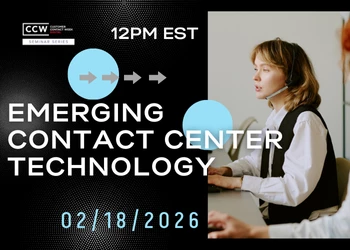Mistake Made in Social Media Marketing, Engagement
Add bookmarkSocial media marketing is a large and growing part of every company’s marketing budget and plan. Conventional wisdom says leveraging "influential" people like friends or celebrities can trigger many others to do new things like purchase a product or join a community. However, new research published in the Harvard Business Review challenges this view and suggests a significant amount of social media investment and focus is being improperly allocated.
Over the years, millions of dollars of social media investment has been directed at finding and leveraging influential consumers who will virally persuade others to try a new product or service. On the surface, this notion makes a lot of sense. Marketers can improve effectiveness and efficiency by targeting only those customers that will use their product and trigger others to do the same. Much of the rationale behind this premise dates back to Malcolm Gladwell’s book, The Tipping Point, which explored why some ideas take off and others don’t. Does this "cause and effect" hold up to statistical scrutiny?
No, or at least not yet. In a social media universe, it still is very difficult to separate influence from other factors in a purchase decision. "Real influence depends on personalized and engaged relationships," says communications pundit John Barker of Truenote. "However social media often dilutes digital relationships to the point where ‘influencer’ impact becomes increasingly abstract."
To get closer to a definitive answer, NYU management professor Sinan Aral conducted a number of experiments to understand who and what is most influential, and who is most predisposed to their influence.
Results
We know from psychology that human behaviour clusters among friends over time. What we don’t know is whether or not this is due to peer influence or another factor, such as similar interests. In one experiment, Aral studied the adoption of a mobile service product within the 27 million-member Yahoo! instant messenger network. The research used the latest analytical models to separate social influence (i.e. how does a friend’s usage or recommendation impact another’s decision to use the product) from another factor, homophliy. A sociological phenomena, homophily is the preference of individuals to associate with, have the same habits as, and like the same things as other people (the proverbial ‘birds of a feather, flock together’ concept), even if these people have no direct connection to each other.
Interestingly, Aral found that traditional measurement models overestimated the impact of a friend’s social influence on purchase decisions by a factor of seven times. Furthermore, these models overstated the role of social influence early in a product’s life cycle (or when a trend should begin). In fact, his research shows half of the perceived influence could be attributed to homophily effects alone. Early adopters tend to be so much alike that social influence plays a lesser role. To see this phenomenon in action, check out the people standing in line at an Apple Store before a new product launch.
Another experiment looked at the role of social influence versus a common digital marketing program on the downloading of a Facebook app. Aral found that while personal invitations from a friend had a higher response rate (6%) versus an automated announcement (2%), the automated messages still generated much better results. Their adoption rates were significantly higher (246%) versus a personal invitation (98%), due to the higher number of automated messages that went out.
To sum up, it appears that using outdated analytics and shaky strategic assumptions is leading marketers to rely too much on social influence-based tactics at the expense of more traditional yet successful homophily (i.e. segment) driven programs.
Implications
This research has significant implications for a firm’s marketing strategy and planning, especially around new product launches.
- Peer-to-peer tactics (e.g., referral incentives) designed to leverage social influence will be less effective and more costly than previously thought. This is not to say that P2P programs should be abandoned; rather they would be more effective introduced later in a product’s roll-out.
- Well-designed digital and traditional advertising and promotion tactics that target discrete segments (based on homophily characteristics) will be more effective and efficient, at least initially.
- Marketers will benefit from using the latest Big Data models so they can design plans with the optimal mix of influence and traditional-based tactics.
Exploiting Big Data may hold the key to super charging the role of social influence. According to Mr. Barker, "Big Data can now provide customized social influence at scale. Building a virtuous circle of "mass personalization" that is both deep and broad could be the "tipping point" for digital marketing. Think influence on steroids."
Mitchell Osak is managing director of Quanta Consulting Inc. Quanta has delivered a variety of winning strategy and organizational transformation consulting and educational solutions to global Fortune 1000 organizations. Mitchell can be reached at mosak@quantaconsulting.com




















